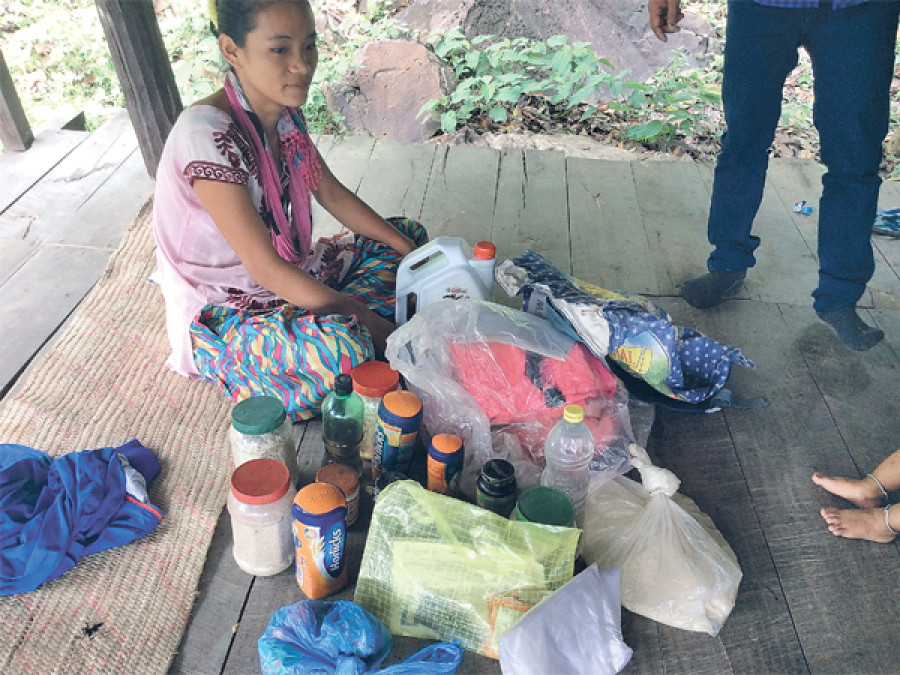Opinion
Go with a bag
Recognising go-bags as survival tools is just one component of disaster risk reduction measures
Sanjay Sharma
Disaster preparedness should be accessible and inexpensive to quickly alleviate the impacts of a disaster. A simple and effective tool, the go-bag, helps reduce vulnerabilities with items easily found at home or local stores.
Natural disasters in Nepal are not uncommon. Every year during the rainy season, the Tarai is inundated by rainfall and the hills suffer from flash floods and land erosion. Fires are rampant during the dry season and other events like dry spells and storms are quite regular.
This spring, two major quakes and subsequent aftershocks added to people’s hardships, especially that of the poor and marginalised living in Nepal’s mid-hills. Regular and one-off events account for a huge loss of human lives, animals and property. They also directly affect the ecosystem. While human interventions may not prevent natural disasters, vulnerabilities can be reduced while the ability to adapt can be increased. The absence of social security, including insurance coverage particularly in rural areas, can be devastating to communities during disasters. At the very least, people can be prepared for disasters. Preparation is not just the responsibility of governments, but also of communities, households, and individuals.
Grab a bag
In the aftermath of the earthquakes and just before the monsoon, we visited six villages in Udayapur, a district in Nepal’s eastern inner-Tarai to research the role of financial remittances in responding to floods and what is required to address the effect of environmental shocks and stresses. We talked with the villagers about go-bags, and two-weeks later followed up on how the 240 women participants of our research and their families felt about the role of go-bags in disaster events.
A woman from Risku Village Development Committee (VDC) seemed to take our message to heart. “Floods do not come with a warning,” she said. “You cannot just starve and die in a time of crisis.”
Go-bags can be key to survival during the times of disasters. During field-testing, go-bags received positive responses from research participants. The idea of a go-bag, locally called a jhatpat jhola, is to keep bare essentials to support a family for up to 72 hours at the ready until help arrives. Depending upon the size of the family and resources available, the number of go-bags can be increased. With the uncertainties brought about by disasters, a go-bag can provide some comfort to people knowing that their family can endure for a few days until assistance arrives or the situation improves.
Go-bags are inexpensive. A woman from Jogidaha spoke highly of the bags because they were easily to put together. “We can prepare this at a very low cost and put materials inside it that are already available in the house,” she said.
Most of the households in the research wards prepared go-bags with available resources. Some of the women used rice sacks as bags. The contents were items such as rice, lentils, salt, spices, water bottles, and basic medicines. Some included: first-aid kits, water purifiers, non-perishable foods, whistles, torch lights, bamboo sticks, knives, ropes, soaps, sanitary-pads, baby supplies, and important legal documents. Based on the family’s ability, additional items like a tarpaulin, portable radio and footwear were added.
The list of the items to be included in the go-bag were based on a template prepared according to information provided by the Red Cross, Nepal Society for Earthquake Technologies, Federal Emergency Management Agency-US, and the National Disaster Management Authority-India and was shared with the households.
Something for everyone
The go-bag is not only vital for immediate survival during the time of big disasters; it is also useful in protecting legal documents such as citizenships, passports, land certificates and others items which are likely to be damaged or destroyed in a flood, earthquake or fire. Replacing documents such as these is often a lengthy and tedious process.
A woman from Rampur Thokshila recounted a time in her life when a go-bag would have been useful. “My house is quite near the river,” she said. “When my house was flooded the last time, I wished I had a go-bag so that I could just run away with the essentials already in it.” Another woman from Risku said it helped her and her children survive.
The essentials carried in the go-bag are not necessarily for one person alone. Rather, it is for a family, at the least. The go-bag user can share essentials with others. Sharing scant resources can be handy. If one household carries water purifiers, the other may have soaps. However, this sharing is not dependent or restricted by a go-bag. Rather, they are based on social ties, local norms or values, basic transactional necessity, or even altruism.
A woman from Jogidaha told us mutual sharing could benefit everyone. “Even if we do not have something we need, we can borrow and lend items from our larger family and neighbours,” she said. But, some women were quite sceptical about go-bags. “What do we do with just this bag when such big floods come?” a woman from Jogidaha wondered.
Recognising go-bags as survival tools is just one component of disaster risk reduction measures. Alone, it cannot address all of the effects of a disaster, but it gives people a means of survival until assistance arrives.
Sharma is associated with the International Centre for Integrated Mountain Development and Gurung is associated with the Nepal Institute of Development Studies




 7.12°C Kathmandu
7.12°C Kathmandu










%20(1).jpg&w=300&height=200)

